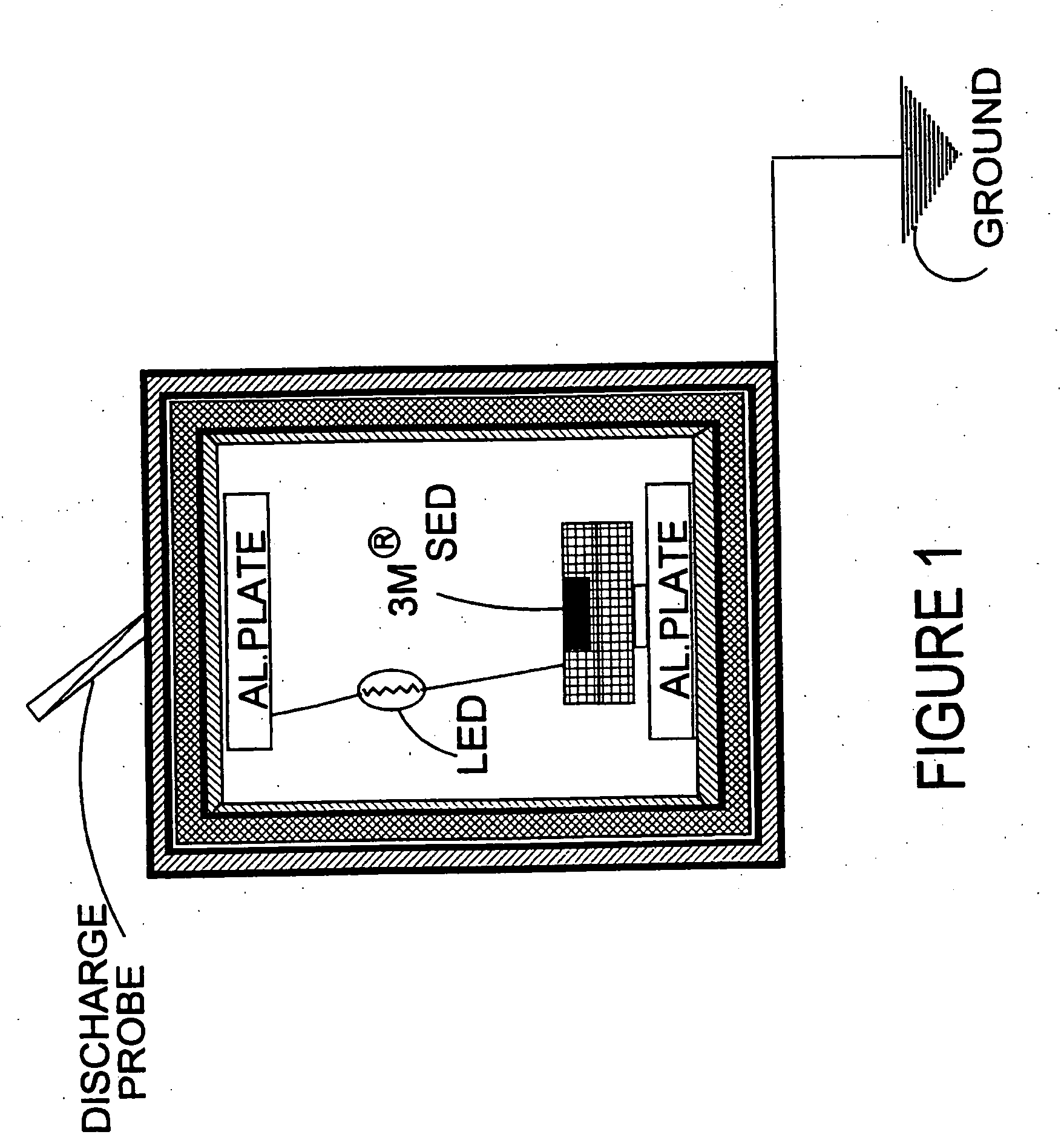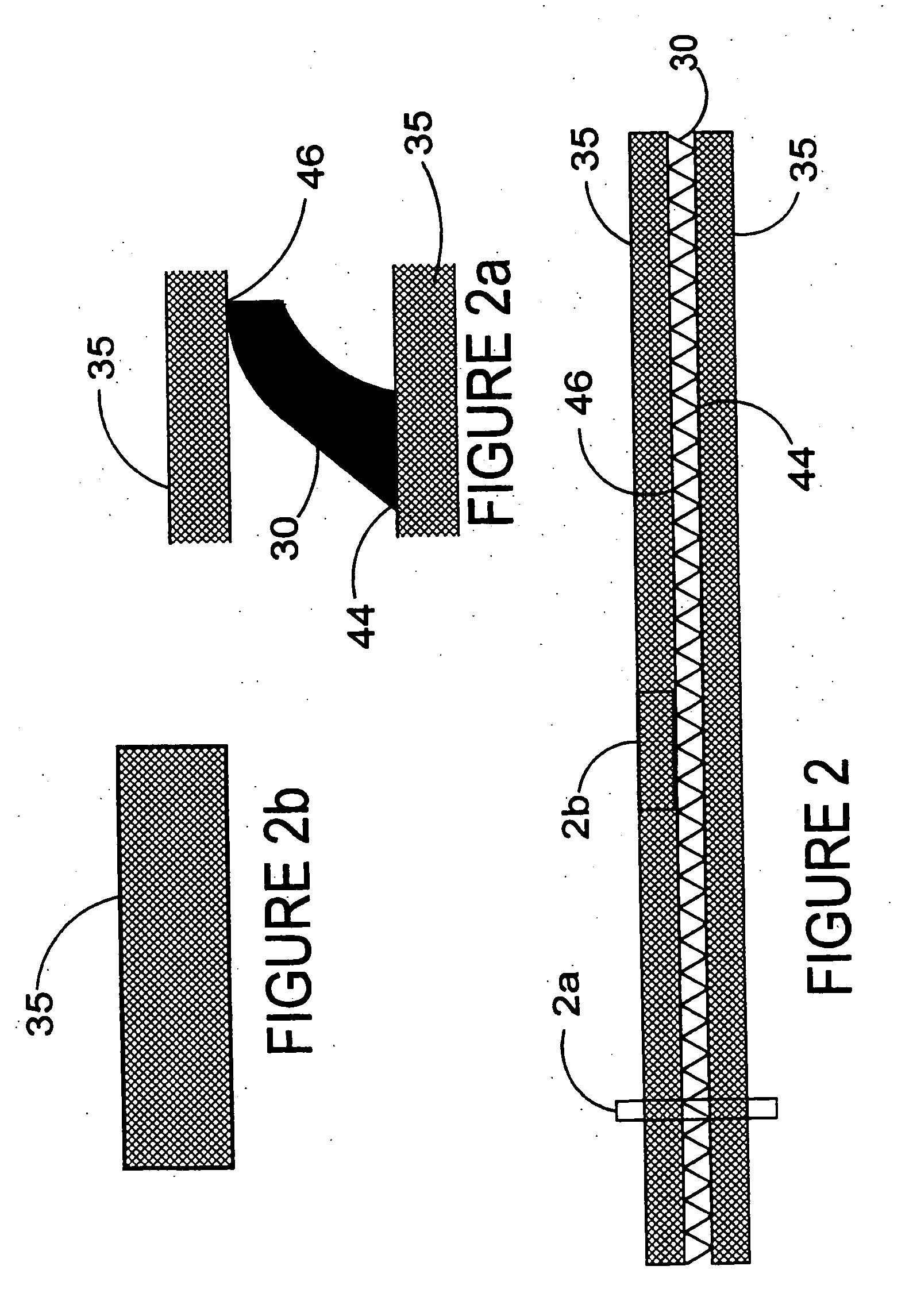Packaging material for electrostatic sensitive devices
a technology for electrostatic sensitive devices and packaging materials, which is applied in the direction of packaging foodstuffs, packaging goods, packaging paper, etc., can solve the problems of lightning bolt or high voltage discharge to ground, problems that cannot be detected immediately, or can take years to be detected
Inactive Publication Date: 2004-07-29
VERMILLION ROBERT J
View PDF43 Cites 9 Cited by
- Summary
- Abstract
- Description
- Claims
- Application Information
AI Technical Summary
Benefits of technology
"The patent text discusses the issue of static electricity and its impact on sensitive electronic components and devices. The invention relates to an improved fiberboard for use in packaging such components and a method for making the improved fiberboard. The technical effect of the invention is to provide a more effective and reliable packaging solution for protecting against static electricity damage."
Problems solved by technology
Electrostatic discharge (ESD) damage is estimated by the ESD Association to cost the electronics industry upwards of $4,000,000,000 annually.
On a larger scale, clouds come into contact with one another and the imbalance of negative and positive ions causes a lightning bolt or high voltage discharge to ground.
The ESD damage, which can occur within a very small fraction of a second, can be highly visible causing problems immediately or can take years to be detected.
Consequently, latent failure could take place causing a product to work 50% of the time or on an erratic basis, which is known in the industry as a case of the "walking wounded".
This static electricity damage can be extremely costly due to product image, consumer returns, and wasted materials and labor.
Perhaps the most tragic incident associated with static discharge occurred in the 1960s, at Cape Canaveral resulting in the death of three astronauts.
Insulative materials would no longer be able to come into close contact with the space vehicles.
Although corrugated natural Kraft (cardboard) boxes have been found to be antistatic or static dissipative at higher relative humidities, the Kraft paper was not electrically conductive enough to provide the necessary static shielding.
Accordingly, the material exhibits insulative characteristics but the material will not drain a charge to ground nor prevent a charge from being generated.
High areas of electronic manufacturing such as California, Colorado, Arizona, Texas and other states, have problems with low relative humidities.
To complicate the issue, air transit of conductive components will cause the packaging to be exposed to conditions of very low relative humidities.
Another problem is that Kraft roll stock is traded between companies and depending upon the amount of virgin fiber that has been pulped in the sulfate process, the paperboard may have too much reducible sulfur.
Sulfur can act as a corrosive to electronic devices that could come into contact with the Kraft liner.
Due to wear, the carbon particles can rub off and bridge the gap of PC board circuit lines and cause a short.
Such a material has a very conductive surface resistance that can exhibit "sparking" or a rapid discharge if the container is in an open state and placed on a grounded surface, this type of discharge is known as a Charged Device Model (CDM) hazard.
From samplings, it appears that the coating process of the reverse side of the Kraft liner compromises the adhesion process between the medium and the liner interior facings.
However, after use, the lesser amounts of carbon on the surface may still be a means to cause a short.
Corrugated with Kraft medium may pose a problem with suppressed charges or hidden charges known as "Crypto" charges that can develop in lower relative humidities.
The original versions of foil laminated corrugated have not been in wide use due to the problems associated with repulpability.
Due to wear and rub off, the conductive particles used in the formulation of the above exterior dissipative liners of this product may be sufficient enough to bridge the gaps of a circuit and cause a short.
Wear and tear will eventually expose the Kraft liner, which could become insulative in lower relative humidities.
If one sampling of the Kraft paper is virgin paper, the material may exhibit higher degrees of reducible sulfur contamination than recycled paper.
The untreated liner has a severe set back in not being able to maintain static dissipative properties in lower relative humidities, i.e. below 12% to 15%.
Differences in test results may also stem from the variance of Kraft liner sources that are widely used in the corrugated industry.
Too little of a dwell time can adversely affect the final readings for meeting the dissipative requirements per ESD-S.11.11-1993.
Too little time can adversely affect the final readings for meeting the dissipative requirements per ESD-S.11.11-1993.
Conductive surfaces drain charges too quickly and cause "sparking" or "rapid" discharges" when a grounded operator touches an ungrounded open container which is known as a Charged Device Model (CDM) hazard.
This is a very hazardous problem since the pins of a circuit board can rub up against coated or carbon loaded dividers or partitions.
Conductive carbon particles can bridge the gap of circuit lines and cause a short.
Moreover, the printing options that can be used greatly outweigh coated or layered carbon linerboard.
Conductive particles do not bridge the gaps of circuit lines or become wedged in an electronic component to cause a spark when a circuit board rubs against a wall of a partitioned container.
The existing conductive ink coated technologies have been known to lose 40% to 50% of their conductive particles in 10 cycles of the above test.
Method used
the structure of the environmentally friendly knitted fabric provided by the present invention; figure 2 Flow chart of the yarn wrapping machine for environmentally friendly knitted fabrics and storage devices; image 3 Is the parameter map of the yarn covering machine
View moreImage
Smart Image Click on the blue labels to locate them in the text.
Smart ImageViewing Examples
Examples
Experimental program
Comparison scheme
Effect test
example i
[0140] Material Specifications
[0141] Static Decay:
[0142] I Standard Rate of decay shall be less than 2.0 seconds
[0143] II Results: Average 0.4 seconds @ 12% RH 73.degree. F.
[0144] III Method: EIA-541, Appendix F, + / -1 Kv to + / -100 v
[0145] Surface Resistance in Ohms:
[0146] I Standard: Less than 1.0.times.10.sup.11 ohms
[0147] II Results: 5.3.times.10.sup.6 ohms -4.5.times.10.sup.9 ohms
the structure of the environmentally friendly knitted fabric provided by the present invention; figure 2 Flow chart of the yarn wrapping machine for environmentally friendly knitted fabrics and storage devices; image 3 Is the parameter map of the yarn covering machine
Login to View More PUM
| Property | Measurement | Unit |
|---|---|---|
| weight | aaaaa | aaaaa |
| weight | aaaaa | aaaaa |
| porosity | aaaaa | aaaaa |
Login to View More
Abstract
Fiberboard to protect sensitive electronic components and devices from the hazards of ESD (electrostatic discharge) incorporates a homogeneous conductive shielding paperboard having an electrical resistance of less than or equal to one thousand ohms resistance that has been adhered together throughout the corrugation process or lamination process with one or more homogeneous static dissipative linerboards. The liners have a surface resistance range between a targeted 1x10<7 >to 1x10<11 >at twelve percent relative humidity and 73° Fahrenheit. The static dissipative linerboard and conductive shielding paperboard can be used as static safe packaging cushioning material, shelving liners, dividers, in-plant handlers, specialty static free packaging, and dissipative or shielding paper bags.
Description
[0001] This application is a continuation of application Ser. No. 09 / 850,368, filed May 7, 2001, which is a continuation of application Ser. No. 08 / 987,101 filed Dec. 8, 1997.[0002] This invention relates to the field of protective packaging and, in particular, packaging suitable for use with electrostatic sensitive devices. One aspect of the invention relates to an improved fiberboard for use in such packaging and a method for making the improved fiberboard.BACKGROUND OF INVENTION[0003] Static Electricity and Packaging[0004] Static electricity is a significant concern in the packaging, handling, manufacturing and distribution of electronic components and computer subassemblies. Electrostatic discharge (ESD) damage is estimated by the ESD Association to cost the electronics industry upwards of $4,000,000,000 annually.[0005] Today's printed circuit boards are very sensitive to static electricity. Advancements in technology over the past 30 years have miniaturized electronics circuitr...
Claims
the structure of the environmentally friendly knitted fabric provided by the present invention; figure 2 Flow chart of the yarn wrapping machine for environmentally friendly knitted fabrics and storage devices; image 3 Is the parameter map of the yarn covering machine
Login to View More Application Information
Patent Timeline
 Login to View More
Login to View More Patent Type & Authority Applications(United States)
IPC IPC(8): B32B29/00B32B29/06B32B29/08D21H27/10H05K9/00
CPCB32B29/00B32B29/06B32B29/08D21H27/10Y10T428/24901Y10T428/24934Y10T428/24132Y10T428/25Y10T428/24694H05K9/0067B32B29/005B32B2307/202B32B2307/21B32B2439/00
Inventor VERMILLION, ROBERT J.
Owner VERMILLION ROBERT J
Features
- R&D
- Intellectual Property
- Life Sciences
- Materials
- Tech Scout
Why Patsnap Eureka
- Unparalleled Data Quality
- Higher Quality Content
- 60% Fewer Hallucinations
Social media
Patsnap Eureka Blog
Learn More Browse by: Latest US Patents, China's latest patents, Technical Efficacy Thesaurus, Application Domain, Technology Topic, Popular Technical Reports.
© 2025 PatSnap. All rights reserved.Legal|Privacy policy|Modern Slavery Act Transparency Statement|Sitemap|About US| Contact US: help@patsnap.com



